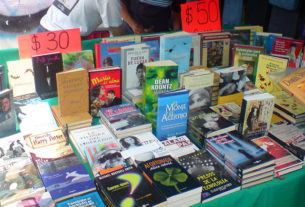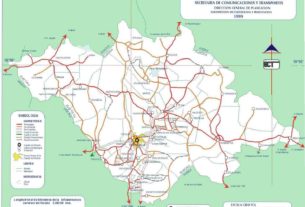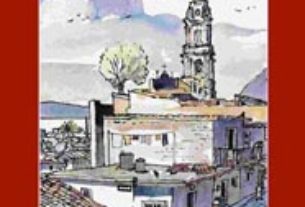(This is the third of a three-part series about Mexico’s tragic Cristero Rebellion, when forces of secular and religious fanaticism were locked in a no-quarter battle for the country’s soul.)
3: Behind the Scenes
Few movements have ever suffered more from a crisis in leadership than that of the Cristeros. René Capistrán Garza, the fiery but inexperienced young zealot originally chosen to head the rebellion, resigned in July 1927 following the failure of an attempted fund-raising mission in the United States.
Another influential Catholic leader was Anacleto González Flores. A brilliant teacher and lawyer, González Flores founded the UP ( see Part I) and had a devoted band of loyal followers, mostly young student activists. But the UP’s influence was limited to west-central Mexico and Gonzáles Flores himself was captured by federal agents on April 1, 1927. The “Maestro,” as he was known to his followers, was executed after being barbarically tortured. He died heroically, forgiving the federal general who supervised his ordeal and promising to act as his “intercessor before God.”
As noted, the LNDLR (National League for the Defense of Religious Liberty) finally decided that the movement would benefit more from the leadership of a competent non-Catholic mercenary like General Gorostieta. This confusion about leadership undoubtedly prolonged the rebellion. Should enemies of the Cristeros — or would-be peacemakers — deal with a collective like the LNDLR or with an ambitious newcomer like Gorostieta who was constantly attempting to whittle down the League’s power and increase his own?
But this uncertainty in no way prevented furious activity from taking place at higher levels. What boded ill for the rebels was that the Catholic bishops in Mexico were by no means unanimously behind the uprising. A majority of them opposed the Cristeros, including Pascual Díaz of Tabasco, who became archbishop of Mexico before the rebellion ended. Though the bishops were expelled from Mexico after the savage train attack, Díaz and other détente-minded prelates worked ceaselessly toward trying to reach an accommodation with the anticlerical government.
This attitude played directly into the hands of one who can be described as the key figure in the peace process. Dwight Whitney Morrow, whose daughter would marry Charles Lindbergh, came to Mexico as American ambassador in October 1927. Even today, Morrow is considered the best ambassador to Mexico that the United States ever appointed. Though a former Morgan partner, Morrow had the common touch and, more important, a genuine affection for the Mexican people and respect for Mexico’s traditions. Laid back and unassuming, he would wander through public markets, buying pottery and making friends with humble market vendors.
But Morrow didn’t neglect making himself popular at higher levels. Charming the gloomy Calles, he initiated a series of breakfasts between the two men at which they discussed not only the thorny religious question but also a wide variety of topics ranging from oil to irrigation. Because of this informal but highly effective style, Morrow became known in the U.S. press as the “ham ‘n eggs diplomat.” Morrow wanted to end the religious conflict for both humanitarian and practical reasons. He deplored the suffering the rebellion was causing and also believed that solution of the oil problem (Mexico would not nationalize oil untill 1938) was going to be delayed as long as the uprising was in progress. Morrow’s chief ally in attempting to end the fighting was Father John J. Burke, head of the National Catholic Welfare Conference. The Vatican was also anxious for a peaceful solution and Archbishop Pietro Fumassoni-Biondi, apostolic delegate to the United States, named Burke his agent in matters pertaining to the Mexican religious conflict.
Calles’ term was due to expire and the president-elect was Alvaro Obregón. Elected July 1, 1928, he was scheduled to take office December 1. But two weeks after his election Obregón was murdered by a young Catholic fanatic, a sidewalk artist who calmly sketched a profile of Obregón when he was sitting at a Mexico City café and then shot him through the head. Not surprisingly, this rash act gave the peace faction a severe jolt.
But hope revived in September, when Emilio Portes Gil, a former governor of Tamaulipas, was named interim president by Mexico’s Congress, with a regular election scheduled for November 1929. Portes Gil was more flexible in his policy toward the Church than Calles, and the Morrow-Burke forces lost no time in resuming the peace initiative.
Their hopes skyrocketed on May 1, 1929, when Portes Gil, in response to a question from a foreign correspondent, declared that “the Catholic clergy, when they wish, may renew the exercise of their rites with only one obligation, that they respect the laws of the land.” He also praised “worthy representatives of Catholicism who counsel respect for law and authority.”
The next day, from Washington, exiled Archbishop Leopoldo Ruíz y Flores issued a statement that the Mexican hierarchy had elected to suspend worship because it ” was not able to accept laws that are enforced in my country“. (Italics added.) The meaning was clear: the bishops were no longer requesting repeal of the oppressive laws but only their more lenient application.
All the while, Morrow worked with the skill of a master juggler, simultaneously manipulating Portes Gil, the Mexican hierarchy, the Vatican and the U.S. State Department. He prepared drafts for both sides, delivered them personally, and smoothed over friction with the suggestion that the contending parties refrain from meeting again until they had read and approved each other’s statements.
Agreement was finally reached June 21, 1929. Under this pact, which came to be known as the arreglos (“arrangements”), worship was resumed in Mexico and the Catholics were granted three minor concessions: the hated registration law would apply only to priests who had been named by hierarchical superiors; religious instruction was permitted in churches (though forbidden in schools); and all citizens, including members of the clergy, were allowed the right of petition for the reform or derogation of any law.
The arreglos paved the way to what was surely the greatest irony of the Cristero Rebellion. In 1928-29 the rebellion had been joined by a number of officers of the Gorostieta stripe: anticlerical, liberal-Masonic but on the outs with the Calles-Portes Gill government. When the arreglos were announced, most of the Catholic Cristeros went home, thinking that fight for freedom of worship had been won. But the liberal-Masonic officers, knowing they would be considered traitors by the victorious government, desperately tried to keep the rebellion alive. They failed and many were captured and shot. Others crossed the northern border and still others were given refuge by General Saturnino Cedillo, the cacique (“boss”) of San Luis Potosi, who had always adopted a lenient policy toward the rebels.
On June 27, for the first time in almost three years, church bells were heard everywhere in Mexico. At their house in Cuernavaca, Morrow turned to his wife. “Do you hear that, Betty?” he said. “I have reopened the churches in Mexico.”
- Part 1: Toward the Abyss
- Part 2: The Combat Phase
- History Index -|- Time Line



